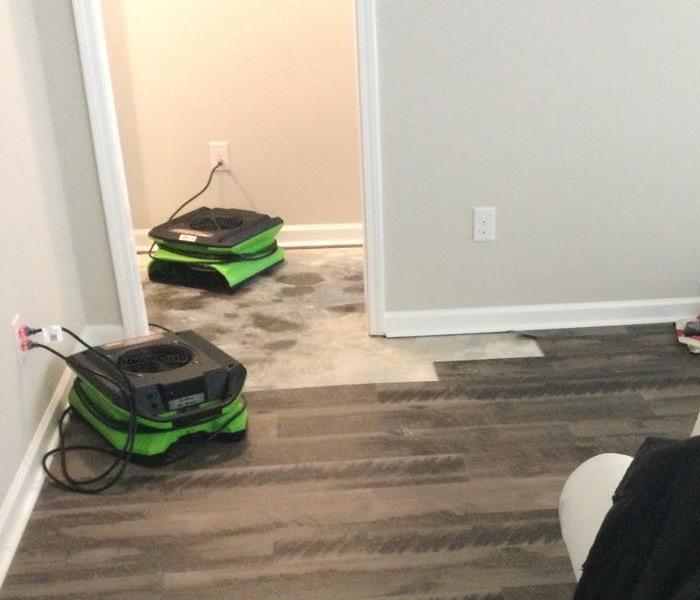Your Water-Resistant Vinyl Floors are not Waterproof in the Event of a Water Loss
8/10/2021 (Permalink)
Vinyl plank flooring has become a popular choice for renovations and new construction. Both homeowners and business owners are opting for this low-cost flooring material for a few reasons. Vinyl plank flooring is easy to install, looks fresh and modern, and is easy to clean. Vinyl plank flooring is also advertised to be water-resistant. While vinyl plank flooring does resist water damages like warping, cracking, or peeling, this type of flooring presents other challenges when a water damage event occurs.
Common water damage events are caused by sources such as a broken water heater, an overflowing washing machine, or a burst water supply pipe. Despite the cause or size of the disaster, the water damage mitigation process is always the same. Our professional water mitigation team inspects and assesses damages, extracts the loose water, utilizes air movers and dehumidifiers to dry affected materials, and cleans remaining materials. Vinyl plank flooring interrupts this process, adding more required demolition to the scope of work.
Our team must inspect all potentially affected areas during the initial inspection to determine where the water has traveled and where it may be hiding. If not addressed, the water you can’t see can lead to future secondary damages such as mold growth. Water may not penetrate through the vinyl plank flooring, but it will almost always migrate under the flooring by way of the edges of the room. Water trapped behind baseboards will flow under the flooring.
Vinyl plank flooring acts as a vapor barrier, trapping the water beneath. This presents two issues. One, our mitigation team cannot extract water hiding underneath the flooring. The hidden water will not vaporize through the flooring to be extracted via dehumidification either. And two, the subfloor will not be able to dry properly with this vapor barrier holding moisture. Both issues can lead to future microbial growth problems. Therefore, all affected vinyl plank flooring must be removed after a water damage event to ensure proper drying. Luckily, some vinyl plank flooring is easy to reinstall once mitigation is complete. This depends upon the initial installation method though.
Our team is here to help if your home or business has incurred water damages. We have emergency restoration professionals ready to respond 24/7/365. Please contact our office if you need assistance.






 24/7 Emergency Service
24/7 Emergency Service
